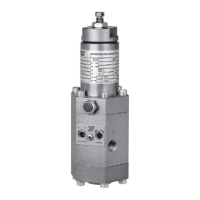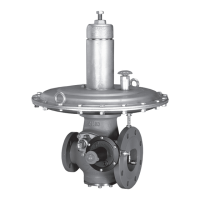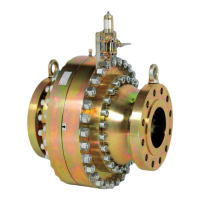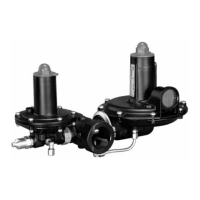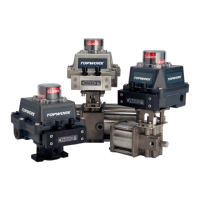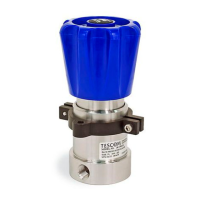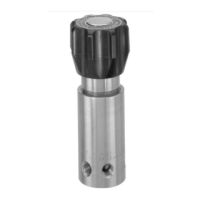Table 3. Troubleshooting for Type PS/79 and PS/80 Pilots
SYMPTOMS CAUSE ACTIONS
Desired setpoint is not reached
Calibration spring (key 5) is too weak Check the springs catalog and replace it with a stronger one
Leaks from pilot connections Check pilot feed connections and proper gas ow feeding
Outlet pressure drops well below setpoint
Filter (key 61) is clogged preventing proper through-ow of gas Clean or replace it
Pad holder (key 56) is swollen preventing proper feed ow To be replaced
Pad holder (key 34) is swollen preventing proper feed ow To be replaced
Outlet pressure increases over setpoint
Faulty sealing of pad holder (key 56) To be replaced
Faulty sealing of pad holder (key 34) To be replaced
Slow response to changes in gas demand
Insufcient ow rate of valve seat (key 30) Increase ow by means of register/pin screw (key 29)
Overly large calibration jet (key 15)
(only for Types PS/79 and PS/80)
To be replaced with a smaller one
Overly rapid response to changes in gas
demand, i.e. Hunting
Excessive ow rate of valve seat (key 30) Reduce ow by means of a pin screw (key 29)
Calibration jet (key 15) is too small
(only for Types PS/79 and PS/80)
To be replaced with a larger one
Not proper internal parts assembly Check clearance between lever (key 39) and forked stem (key 35)
Gas continually escaping from relief (S) Defective seal of pad (key 21) To be replaced
The outlet pressure is not within the usual values
Diaphragms (key 10) are damaged Replace diaphragms (key 10) that show signs of wear
Upper diaphragm (key 10) is damaged If gas escapes from silencer (key 45), replace upper diaphragm (key 10)
TROUBLESHOOTING
Key Description
1 Adjusting screw
2 Nut
3 Spring holder
4 Cover
5 Spring
6 Nut
7 Screw
8 Washer
9 Plate
10* Diaphragm
11 Plate
12* O-ring
13 Stem
Key Description
14* O-ring
15* Jet
16 Locking nut
17* “GACO” Ring
18 Thrust bearing
19 Spring
20 Safety valve
21* Pad
22* O-ring
23* O-ring
24 Plug
25 Body
26 Seat
PARTS LISTS
Type PS/79 (See Figure 3)
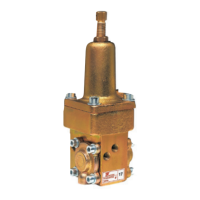
